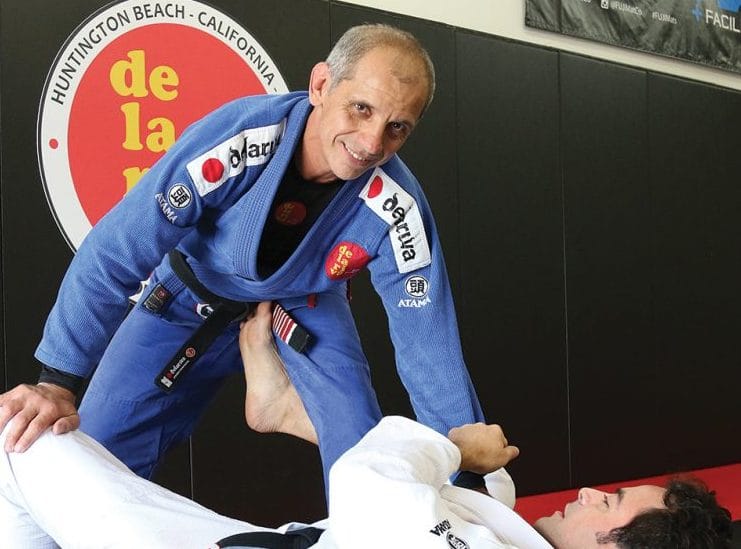RICARDO DE LA RIVA GETTING HOOKED

Lineage: Mitsuyo Maeda > Carlos Gracie > Carlson Gracie > Ricardo De La Riva
Main Achievements:
❖❖World Bronze Medallist
❖❖Copa Cantao Champion
FAVORITETECHNIQUE/POSITION: De La Riva Guard.
WEIGHT DIVISION: Peso Pluma/Super Featherweight (64Kg – 141lbs).
TEAM/ASSOCIATION: Fought for Academia Carlson Gracie, but has formed his own team as a coach
It is often said that imitation is the sincerest form of flattery. Well then, how about if an entire community universally acknowledges a particular position and names it after you? How would that rank on the flattery meter? Well, that’s exactly what happened with one Ricardo De La Riva Goded. I’m sure that the last person to ever think that something of this magnitude ever happening would be DLR himself. Chances are anyone who has practiced jiu-jitsu long enough (especially in a competitive environment) are sure to have heard of the De La Riva guard at some point. It’s that open guard with its pesky hook that can make any guard passer’s life miserable if they haven’t spent enough time learning about it. As you will come to understand, De La Riva is very humble and modest about being acknowledged as the pioneer of this type of guard and will be quick to tell you that he didn’t invent it. But what can you say about an individual who becomes so proficient at something to the point where that hook gets named after you? Well, at the very least, I think it would be nothing short of flattering.
Growing up in Rio de Janeiro, Ricardo, along with his brothers, liked to spend some of their past time playing soccer on the beach. It was here in which Ricardo would eventually be lead from the sand to the mats. While playing soccer with his brothers, another group of guys came over and insisted that the brothers allow them into their game. After one of Ricardo’s older brothers tried to explain to the guys that they wanted to just keep the game amongst the brothers, the newcomers didn’t seem to take rejection too well and made it clear that if they wouldn’t let them into their soccer game, that they were prepared to escalate to an all-out brawl against the brothers. With this, the brothers begrudgingly took their call and were essentially run off the beach.
